1. Vitthal Rukhmini Temple, Pandharpur – History & Culture
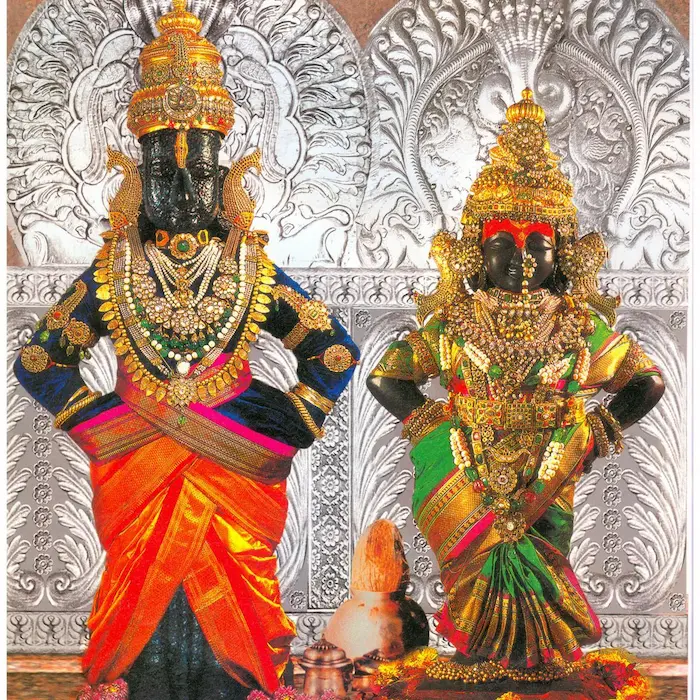
Why in News
A language row has recently erupted at the famous Vitthal-Rukhmini Temple in Pandharpur, Maharashtra, underlining continuing cultural and linguistic tensions in the region.
Location & Deity
- Situated in Pandharpur, Maharashtra, along the banks of the Bhima River (locally known as Chandrabhaga).
- Dedicated to Lord Vithoba (a form of Vishnu/Krishna) and his consort Rukhmini.
- Classified as one of the 108 Abhimana Kshethrams in the Vaishnavate tradition.
Historical Background
- Original Construction: Built between 1108–1152 CE by King Vishnuvardhana of the Hoysala Empire, through the devotion of Pundalik.
- Inscriptions: An inscription of Hoysala King Vira Someshwara (1237 CE) granted a village for temple maintenance.
- Architectural Evolution:
- Extensive temple structure completed in the late 13th century in the Hemadpanti style.
- Damaged multiple times; current structure rebuilt in the 17th century in Deccan style (dome motifs, lobed arches).
- Supported financially by Peshwas of Pune, Shindes of Gwalior, and Holkars of Indore.
Cultural Significance
- Inclusive Reform: In 2014, became the first shrine in India to allow individuals from backward categories to serve as priests.
- Acts as a spiritual and cultural hub in Maharashtra, influencing bhakti traditions, literature, and community integration.
- A focal point for Warkari movement, known for its devotional pilgrimages (yatra).
Architectural Styles in Brief
- Hemadpanti Style: Large stone blocks without mortar; simple yet massive construction.
- Deccan Style (17th century): Incorporates domes, arches, and Mughal-influenced decorative motifs.
Exam Connect – Possible Questions
Prelims
- Consider the following statements about the Vitthal-Rukhmini Temple:
- It is located on the banks of the Chandrabhaga River in Maharashtra.
- It was originally constructed during the Hoysala Empire period.
- It is one of the 12 Jyotirlingas of India.
Which of the above statements is/are correct?
A. 1 and 2 only
B. 2 and 3 only
C. 1 only
D. 1, 2 and 3
Answer: A. 1 and 2 only
Explanation: It is on the Chandrabhaga River, built in Hoysala period; it is not a Jyotirlinga shrine.
- Which architectural style was used in the 13th-century expansion of the Vitthal-Rukhmini Temple?
A. Nagara
B. Vesara
C. Hemadpanti
D. Dravida
Answer: C. Hemadpanti
Explanation: The late 13th-century work followed the Hemadpanti style of large stone block construction without mortar.
Mains
- Discuss the historical evolution of the Vitthal-Rukhmini Temple at Pandharpur, highlighting the socio-cultural reforms associated with it in recent times.
- Religious sites in India often become focal points for social reform as well as cultural conflicts. Analyse this statement in the context of the recent language row at the Vitthal-Rukhmini Temple.
2. Dhirio (Bull Fighting in Goa) – Indian Society
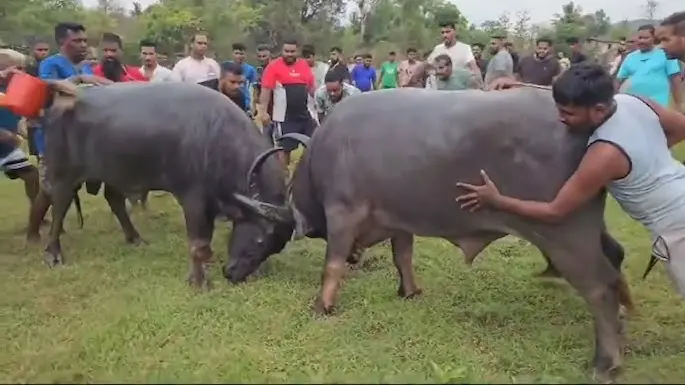
Why in News
Legislators from multiple political parties in the Goa Assembly have called for the legalisation of Dhirio — a traditional form of bull fighting — citing its cultural heritage value.
Cultural Background
- Dhirio/Dhiri: Traditional bull fighting event in Goa.
- Season: Typically held after harvest season.
- Venue: Paddy fields or football grounds.
- Historical Roots: Dates back to the Portuguese colonial era.
- Occasions: Often part of church festivals, drawing large village gatherings.
Event Description
- Two bulls are brought by village shepherds to compete.
- Bulls charge, lock horns, and headbutt each other.
- Trainers provoke bulls from behind to keep the contest active.
- Functions as a community entertainment event and symbol of local pride.
Legal Status
- 1997: Bombay High Court (Goa Bench) directed a ban on all animal fighting, including Dhirio, under the Prevention of Cruelty to Animals Act, 1960.
- Despite the ban, debates over legalisation continue, with proponents citing:
- Preservation of Goan cultural heritage.
- Potential for regulated, cruelty-free versions.
Cultural Significance vs. Ethical Concerns
Significance:
- Strengthens community bonds.
- Acts as a marker of Goan identity.
- Integral to post-harvest celebrations.
Concerns:
- Animal welfare violations.
- Possible conflict with national animal rights laws.
- Risk of public disorder during large gatherings.
Comparative Perspective
- Similar debates exist over traditional sports like:
- Jallikattu (Tamil Nadu)
- Kambala (Karnataka)
- In some states, legislative amendments have carved cultural exceptions to national laws.
Exam Connect – Possible Questions
Prelims
- Consider the following statements about Dhirio:
- It is a form of bull fighting traditional to Goa.
- It has its origins in the Maratha Empire period.
- It was banned under the Prevention of Cruelty to Animals Act, 1960.
Which of the above statements is/are correct?
A. 1 and 3 only
B. 2 and 3 only
C. 1 only
D. 1, 2 and 3
Answer: A. 1 and 3 only
Explanation: Dhirio dates back to the Portuguese era, not the Maratha period.
- In which of the following states is a traditional bull sport called Jallikattu legally practiced under special state amendments?
A. Kerala
B. Tamil Nadu
C. Karnataka
D. Maharashtra
Answer: B. Tamil Nadu
Explanation: Tamil Nadu passed a state law exempting Jallikattu from central animal cruelty provisions.
Mains
- Discuss the tension between cultural preservation and animal welfare laws in the context of traditional sports like Dhirio in Goa.
- Compare the legal and cultural debates surrounding Dhirio with similar traditional animal-based sports in other Indian states.
3. Khelo India ASMITA Football League 2025–26 – Governance
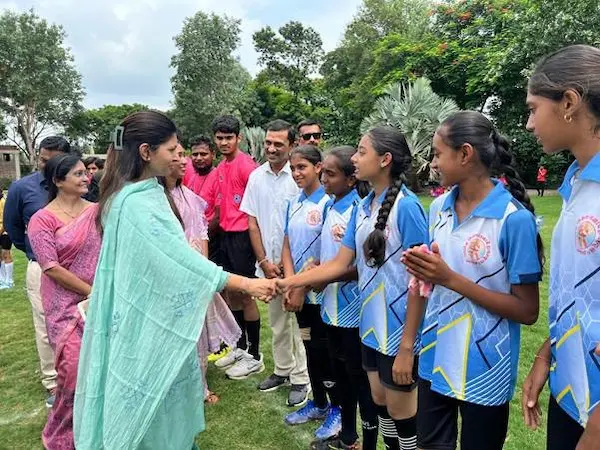
Why in News
The Khelo India ASMITA Football League for 2025–26 was recently inaugurated in Jalgaon, Maharashtra by the Minister of State for Youth Affairs and Sports, marking a significant push towards women’s participation in sports.
About Khelo India ASMITA
- Full Form: Achieving Sports Milestones by Inspiring Women Through Action (ASMITA).
- Aim: Inspire women and increase participation in sports.
- Part of:Khelo Bharat Niti – a broader policy focusing on:
- Grassroots sports development.
- Women’s empowerment through sports.
Key Features of 2025–26 Edition
- Planned Events: 852 ASMITA leagues across 15 sports disciplines.
- Target Beneficiaries: Over 70,000 women athletes.
- Focus Sport (current event): Football.
- Implementation: Supported by Sports Authority of India (SAI) in collaboration with National Sports Federations.
Objectives
- Gender Equality in Sports
- Correct historical imbalance in women’s participation.
- Provide dedicated platforms for girls and women.
- Grassroots Sports Development
- Talent identification in rural, semi-urban, and urban areas.
- Foster inclusivity in sports ecosystems.
- Breaking Stereotypes
- Encourage women to emerge as role models.
- Challenge societal perceptions limiting women’s sports involvement.
Significance
- Talent Pipeline: Helps in scouting athletes for national and international representation.
- Empowerment Tool: Sports as a medium for self-confidence, health, and economic opportunity.
- Cultural Shift: Normalises women’s sports as mainstream, not peripheral.
- Policy Alignment: Complements Beti Bachao, Beti Padhao and National Sports Policy goals.
Challenges Ahead
- Ensuring sustained funding for leagues.
- Overcoming social resistance in conservative regions.
- Providing quality infrastructure and trained coaching staff.
- Maintaining consistent athlete engagement post-event.
Exam Connect – Possible Questions
Prelims
- Consider the following statements about the Khelo India ASMITA initiative:
- It is implemented under the Khelo Bharat Niti framework.
- It is aimed exclusively at promoting football among women.
- The Sports Authority of India plays a key role in its implementation.
Which of the statements given above is/are correct?
A. 1 and 3 only
B. 2 and 3 only
C. 1 and 2 only
D. 1, 2 and 3
Answer: A. 1 and 3 only
Explanation: While the 2025–26 inauguration was for a football league, ASMITA covers 15 sports, not just football.
- The Khelo India ASMITA initiative primarily seeks to address which of the following?
A. Infrastructure development in rural areas.
B. Historical gender imbalance in sports.
C. Sports tourism promotion.
D. Regulation of sports federations.
Answer: B. Historical gender imbalance in sports.
Explanation: The core focus is on improving women’s participation and representation.
Mains
- Discuss the role of initiatives like Khelo India ASMITA in promoting gender equality in Indian sports. How can such programs be made sustainable?
- Grassroots sports programs can be powerful tools for social change. Analyse this statement in the context of the Khelo India ASMITA initiative.
4. Pneumococcal Disease and PCV20 Vaccine – Science & Technology

Why in News
- Pfizer has launched its next-generation 20-valent pneumococcal conjugate vaccine (PCV20) in India.
- Protects against 20 serotypes of Streptococcus pneumoniae, responsible for a major share of pneumococcal diseases.
About Pneumococcal Disease
- Cause: Streptococcus pneumoniae (Pneumococcus) – a Gram-positive, encapsulated bacterium.
- Nature: Can cause both mild and severe infections.
Types of Pneumococcal Infections
- Mild Forms:
- Otitis media (ear infection)
- Sinusitis
- Severe / Invasive Forms:
- Pneumonia
- Meningitis
- Bacteremia (blood infection)
Vulnerable Groups
- Young children (especially under 5 years)
- Elderly
- Immunocompromised individuals
- People in developing countries with limited healthcare access
Epidemiological Impact
- Global deaths: ~1 million children annually.
- Higher burden in low- and middle-income countries.
Transmission
- Spread via direct contact with respiratory secretions (e.g., coughing, sneezing).
- Healthy carriers can transmit without showing symptoms.
Virulence Factor
- Polysaccharide capsule is crucial for:
- Evading host immune response.
- Determining bacterial serotype.
Treatment
- Antibiotics: First-line management.
- Problem: Rising antimicrobial resistance (AMR) makes treatment less effective.
Prevention
- Vaccines: Conjugate vaccines like PCV13, and now PCV20.
- PCV20 advantage: Broader coverage (20 serotypes).
- Essential for at-risk groups.
Significance of PCV20 Launch
- Expands protection against more strains in India.
- Supports India’s Universal Immunisation Programme (UIP) goals.
- Helps address the global AMR challenge by reducing infection incidence.
Exam Connect – Possible Questions
Prelims
- Consider the following statements about Pneumococcal Disease:
- It is caused by a Gram-negative bacterium.
- It can lead to both pneumonia and meningitis.
- Vaccination can significantly reduce disease incidence in children.
Which of the above statements is/are correct?
A. 1 and 2 only
B. 2 and 3 only
C. 1 and 3 only
D. 1, 2 and 3
Answer: B. 2 and 3 only
Explanation: Streptococcus pneumoniae is Gram-positive, not Gram-negative.
- With reference to pneumococcal conjugate vaccines, which of the following statements is correct?
A. They are effective against all known bacterial infections.
B. They target specific serotypes of Streptococcus pneumoniae.
C. They provide lifelong immunity after a single dose.
D. They are only given to the elderly.
Answer: B. They target specific serotypes of Streptococcus pneumoniae.
Explanation: Conjugate vaccines protect against particular serotypes included in their formulation.
Mains
- Pneumococcal disease continues to be a major global health concern despite available vaccines. Discuss the role of antimicrobial resistance and vaccine innovation in tackling this challenge.
- Evaluate the public health significance of introducing PCV20 in India’s immunisation strategy, especially for vulnerable populations.
5. Bhagirathi River – Geography
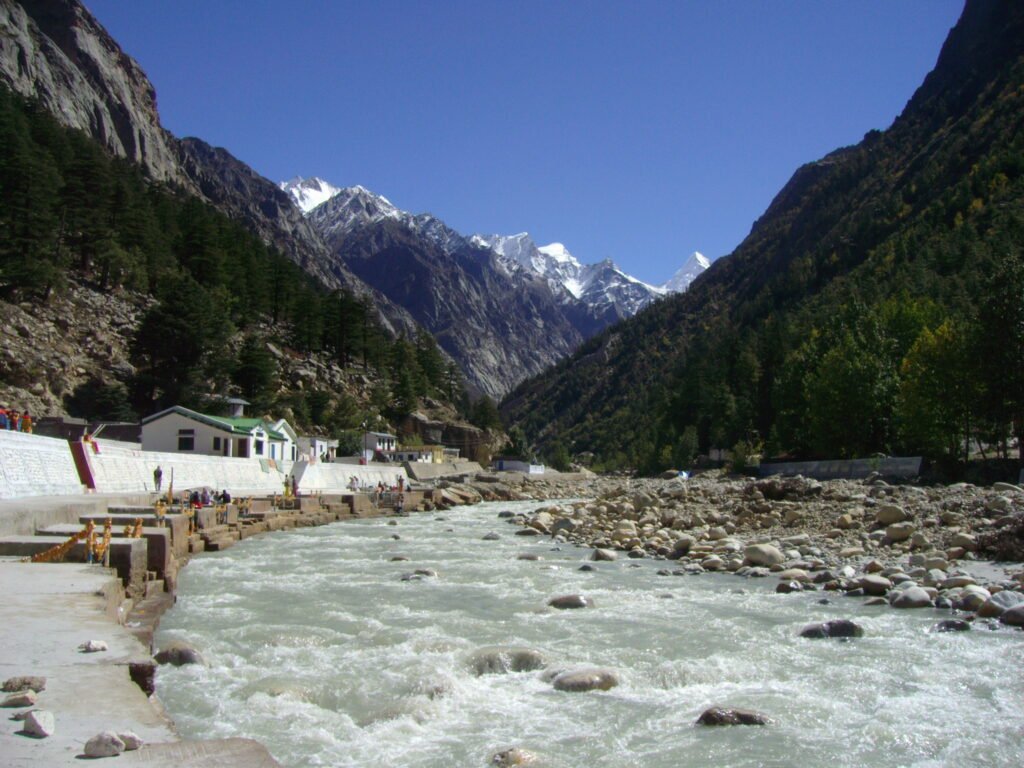
Why in News
- A cloudburst in Uttarkashi district, Uttarakhand has created a lake-like water body stretching over 1 km on the Bhagirathi River near Harsil.
- Authorities have begun urgent drainage operations to manage water levels.
Geographical Overview
- One of two headstreams of the Ganges River – the other is Alaknanda.
- Mythology vs Hydrology:
- Hindu Mythology: Bhagirathi is the source stream of the Ganga.
- Hydrological studies: Alaknanda is the true source due to greater length & discharge.
- Origin: Gaumukh Glacier, at the base of Gangotri and Khatling Glaciers, Garhwal Himalayas.
- Major Tributaries:
- Kedar Ganga
- Jadh Ganga
- Asi Ganga
- Confluence: Meets Alaknanda at Devprayag, forming the Ganges River.
Religious & Cultural Significance
- Devprayag Confluence: Part of Panch Prayag Yatra (Devprayag, Rudraprayag, Nandprayag, Karnaprayag, Vishnuprayag).
- Gangotri: Located on the banks, one of the Char Dham pilgrimage sites.
- Holds a central place in Hindu mythology associated with King Bhagiratha bringing Ganga to Earth.
Hydrological & Economic Importance
- Major Dams:
- Maneri Dam
- Koteshwar Dam
- Tehri Dam – among tallest dams in the world, key for hydroelectricity and water storage.
- Vital for irrigation, hydropower, and drinking water supply in downstream plains.
Environmental Concerns
- Vulnerable to glacial melt, flash floods, and landslides.
- Human interventions (dams, road construction) altering flow regime and sediment load.
- Climate change increasing cloudburst events in Himalayan region.
Exam Connect – Possible Questions
Prelims
- Consider the following statements about the Bhagirathi River:
- It originates from the Gangotri Glacier in the Garhwal Himalayas.
- It is hydrologically considered the main source of the Ganges.
- It meets the Alaknanda River at Devprayag.
Which of the above statements is/are correct?
A. 1 and 2 only
B. 1 and 3 only
C. 2 and 3 only
D. 1, 2 and 3
Answer: B. 1 and 3 only
Explanation: Hydrologically, the Alaknanda is considered the main source due to greater length and discharge.
- Which of the following is NOT a tributary of the Bhagirathi River?
A. Kedar Ganga
B. Jadh Ganga
C. Mandakini
D. Asi Ganga
Answer: C. Mandakini
Explanation: Mandakini is a tributary of the Alaknanda, not the Bhagirathi.
Mains
- Discuss the geographical, cultural, and economic importance of the Bhagirathi River in the context of Uttarakhand’s development.
- Examine the environmental risks posed by extreme weather events and infrastructure development in the Bhagirathi River basin. Suggest mitigation measures.
6. National Sports Governance Bill 2025 and National Anti-Doping (Amendment) Bill 2025 – Polity
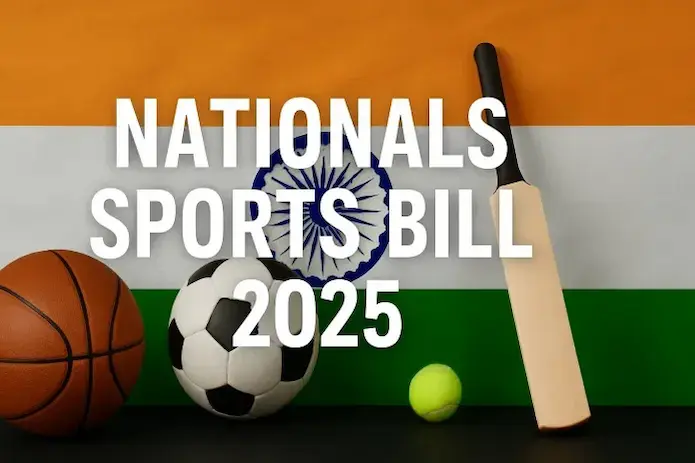
Why in News
- The Lok Sabha has passed two major bills:
- National Sports Governance Bill 2025
- National Anti-Doping (Amendment) Bill 2025
- Considered the largest sports governance reform since Independence.
- Aligned with India’s bid for the 2036 Summer Olympics.
1. National Sports Governance Bill 2025
Objectives
- Enhance transparency, accountability, and performance in sports administration.
- Modernise governance structure in line with global best practices.
Key Provisions
- New Governing Bodies
- National Olympic Committee and National Paralympic Committee to oversee elite sports.
- National Sports Board (NSB) to:
- Monitor National Sports Federations (NSFs).
- Ensure compliance with governance norms.
- National Sports Tribunal
- Judicial body for sports-related disputes.
- Appeals only allowed to the Supreme Court.
- Transparency & Accountability
- Federations receiving government funding brought under Right to Information (RTI) Act.
- BCCI also included under RTI (with specific exemptions).
- Leadership Provisions
- Age limit relaxed: Administrators aged 70–75 years may contest elections if permitted under international federation rules.
- Earlier limit: 70 years.
2. National Anti-Doping (Amendment) Bill 2025
Objectives
- Align Indian anti-doping framework with World Anti-Doping Agency (WADA) standards.
- Ensure operational independence of National Anti-Doping Agency (NADA).
Key Provisions
- National Anti-Doping Board to continue but will not oversee NADA, ensuring no interference.
- Strengthens:
- Athlete rights protection.
- Fair play enforcement in line with global norms.
Significance of the Bills
- For Governance: Creates structured oversight and reduces conflicts in sports administration.
- For Athletes: Improves dispute resolution and safeguards against doping-related injustices.
- For Global Standing: Positions India as a credible sports nation ahead of its Olympic bid.
Challenges Ahead
- Effective implementation and compliance monitoring.
- Avoiding politicisation of sports bodies.
- Building capacity and infrastructure for anti-doping labs and testing.
- Ensuring independence in tribunal and NADA functioning.
Exam Connect – Possible Questions
Prelims
- Which of the following statements about the National Sports Governance Bill 2025 is correct?
A. It creates the National Sports Tribunal whose decisions can be appealed in High Courts.
B. It brings government-funded sports federations under the RTI Act.
C. It fixes the maximum age for sports administrators at 70 years without exceptions.
D. It dissolves the BCCI.
Answer: B. It brings government-funded sports federations under the RTI Act.
Explanation: Age limit can extend to 75 years under certain conditions; appeals go directly to the Supreme Court. - The National Anti-Doping (Amendment) Bill 2025 aligns India’s anti-doping laws primarily with which of the following?
A. International Olympic Committee guidelines
B. UNESCO Anti-Doping Charter
C. World Anti-Doping Agency (WADA) standards
D. Commonwealth Games Federation rules
Answer: C. World Anti-Doping Agency (WADA) standards.
Mains
- Discuss the significance of the National Sports Governance Bill 2025 in improving transparency and accountability in Indian sports administration.
- Evaluate India’s approach to anti-doping in light of the National Anti-Doping (Amendment) Bill 2025. How will it strengthen India’s global sporting credibility?
7. Recurring Monsoon Disasters in the Himalaya: Beyond Climate Change Narratives – Environment
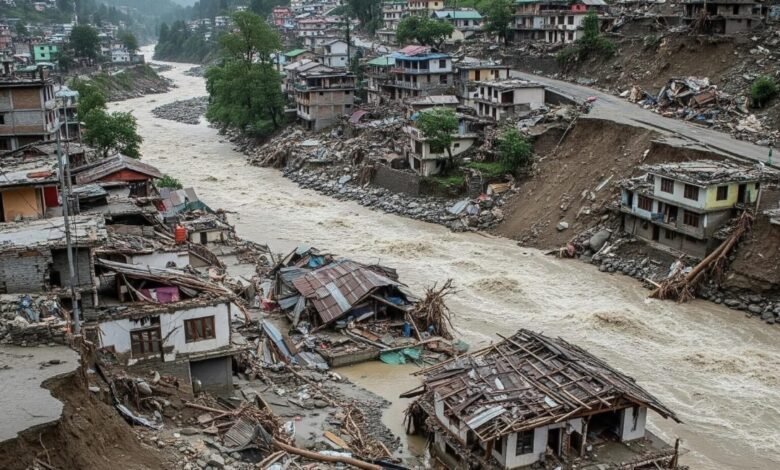
Why in News
- Uttarakhand and Himachal Pradesh are witnessing severe erosion and flash floods during the current monsoon season.
- Public discourse often attributes such disasters solely to climate change, but historical patterns and local human activities also play a major role.
Key Observations
- Natural + Anthropogenic Factors influence disaster frequency and intensity.
- Severe weather events have historical precedence in the Himalayan region.
- Unplanned development, tourism pressure, and poor land-use practices have significantly heightened vulnerability.
Historical Context of Disasters
| Year | Event | Key Cause |
|---|---|---|
| 2013 | Kedarnath floods | Glacial lake outburst + excessive rainfall |
| 2011 | Assi Ganga floods (Uttarkashi) | Heavy rains, infrastructure damage |
| 1970 & 1978 | Floods in Uttarakhand | Landslide blockage of tributaries |
| 1880 | Harsil flash flood | Natural hydrological surge |
Structural & Environmental Vulnerabilities
- Geological Instability
- Himalayas are young fold mountains → prone to landslides and erosion.
- Seismic activity compounds risks.
- Hydrological Extremes
- Glacial melt, cloudbursts, and intense rainfall events.
- Sediment-laden rivers with variable discharge.
- Anthropogenic Triggers
- Construction on riverbanks and floodplains.
- Tourism overload (e.g., Char Dham Yatra) straining infrastructure.
- Encroachment despite existing regulations.
- Hydropower projects altering river flow and sediment balance.
- Governance Gaps
- Weak enforcement of land-use regulations.
- Political pressure to approve unsafe development.
- Reactive disaster relief approach instead of proactive risk reduction.
Moving Towards Sustainable Mountain Governance
- Shift focus: From post-disaster relief → pre-disaster resilience.
- Science-based Land Use Planning:
- Hazard zonation mapping.
- No-construction zones in ecologically sensitive areas.
- Resilient Infrastructure:
- Climate-adaptive road & bridge designs.
- Slope stabilisation measures.
- Tourism Regulation:
- Cap on visitor numbers in fragile zones.
- Eco-tourism promotion.
- Community Involvement:
- Local participation in disaster planning.
- Traditional ecological knowledge integration.
Exam Connect – Possible Questions
Prelims
- Which of the following is NOT a human-induced factor contributing to increased flood vulnerability in the Himalayan states?
A. Tourism-related infrastructure expansion
B. Unplanned construction on riverbanks
C. Seismic activity
D. Encroachment into floodplains
Answer: C. Seismic activity
Explanation: Seismic activity is a natural factor, not anthropogenic. - The 2013 Kedarnath disaster was primarily triggered by:
A. Earthquake in Garhwal Himalayas
B. Sudden glacial lake outburst with heavy rainfall
C. Landslide blocking a tributary
D. Dam burst in Uttarakhand
Answer: B. Sudden glacial lake outburst with heavy rainfall.
Mains
- “Climate change is not the sole driver of Himalayan monsoon disasters.” Discuss with reference to historical events and local human activities in Uttarakhand and Himachal Pradesh.
- Suggest a framework for sustainable mountain governance to reduce the risk of recurring monsoon-related disasters in the Indian Himalayan Region.
